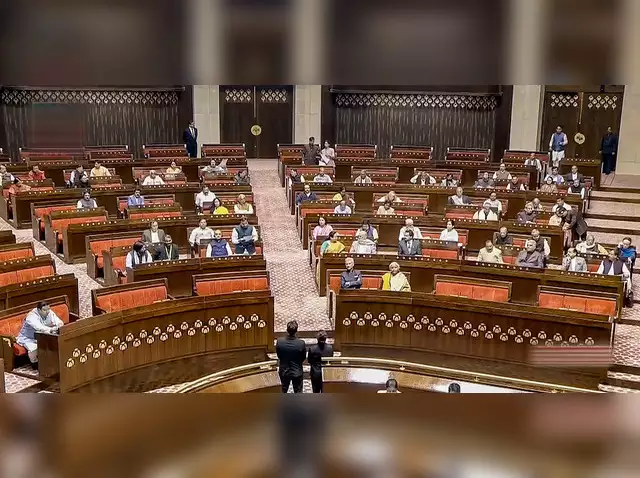Current context:
recently, The Election Commission of India (ECI) has declared the election schedule for upper house.
about Rajya sabha/upper house:
- The Rajya Sabha, also known as the Upper House of Parliament, plays a crucial role in India’s legislative system.
- it is often regarded as the ‘House of Elders.’ The Rajya Sabha bears the crucial responsibility of scrutinizing the bills passed by the Lok Sabha, the ‘House of People’, and giving recommendations as it deems necessary.
Significance of Rajya Sabha:
- Reviewing and approving central legislation.
- Discussing national issues and offering a unique perspective from the states.
- Providing a platform for diverse voices and viewpoints to be heard.
Composition of the Rajya Sabha:
- Article 80 of the Constitution outlines the provisions for members of the Rajya Sabha. Currently, it comprises 245 members, including 233 elected members and 12 nominated members.
- The constitutional limit ensures that the Upper House strength does not exceed 250 members.
- The number of Rajya Sabha seats a state can send depends on its population. As states merge, bifurcate, or new ones are created, the elected seat count adjusts accordingly.
- Nominated members are chosen by the President of India in fields such as art, literature, science, and social service.
- The Vice-President serves as the ex-officio chairperson of the Rajya Sabha, while the Deputy Chairman, elected from among the members, manages day-to-day affairs in the Chairman’s absence.
Tenure and Permanence:
- Each Rajya Sabha member has a six-year tenure, and elections for one-third of the seats occur every two years.
- If a casual vacancy arises, the newly elected member serves the remainder of their predecessor’s term.
- Unlike the Lok Sabha, the Rajya Sabha is not subjected to dissolution. However, it can be prorogued by the President.
Election Process:
- Rajya Sabha members are indirectly elected by the people through the MLAs (Members of Legislative Assembly).
- The election follows the single transferable vote (STV) system, where each MLA’s vote counts only once.
- To secure a Rajya Sabha seat, a candidate must obtain a specific number of votes. The formula for calculating this required vote is:
- Required vote = Total number of votes / (Number of Rajya Sabha seats + 1) + 1
Major controversies related to Rajya Sabha election:
- Cross-Voting and “Horse-Trading”: Cross-voting by MLAs against party lines raises electoral malpractices and “horse-trading” concerns, with the Election Commission facing criticism for its effectiveness in curbing such practices.
- Use of Money Power: Campaigns face concerns over excessive money power, influencing voters, and creating an uneven playing field. Debates persist on spending limits’ effectiveness and the need for stricter enforcement.
- Role of Regional Parties: Regional parties’ influence in Rajya Sabha elections is causing potential challenges to national unity, necessitating a balance between regional aspirations and national interests.
- Representation of Women and Minorities: Critics argue that the Rajya Sabha’s representation of women and marginalized communities is low, despite efforts to improve gender and minority representation.
- Federalism and State Representation: The proportional representation system raises concerns about overrepresentation of larger states and their undue influence, posing questions about balancing state representation with national priorities.
Way forward
However, there are some criticisms of the current system of electing Rajya Sabha members. There are several proposals for reforming the Rajya Sabha election process. Some people have suggested that the system should be changed to direct elections, where the voters directly elect the members of the Rajya Sabha. Others have suggested changing the system to a system of proportional representation, where the number of seats a party gets in the Rajya Sabha is based on the percentage of votes won in the Lok Sabha elections. It is important to note that there are different views on the issue of Rajya Sabha electoral reforms. Some people believe that the current system is working well and there is no need to change it. Others believe that the current system is flawed and needs to be reformed.

